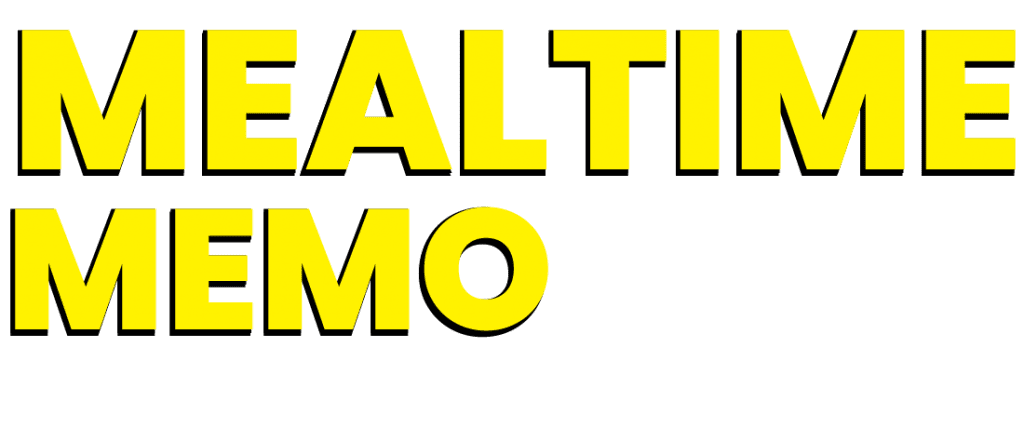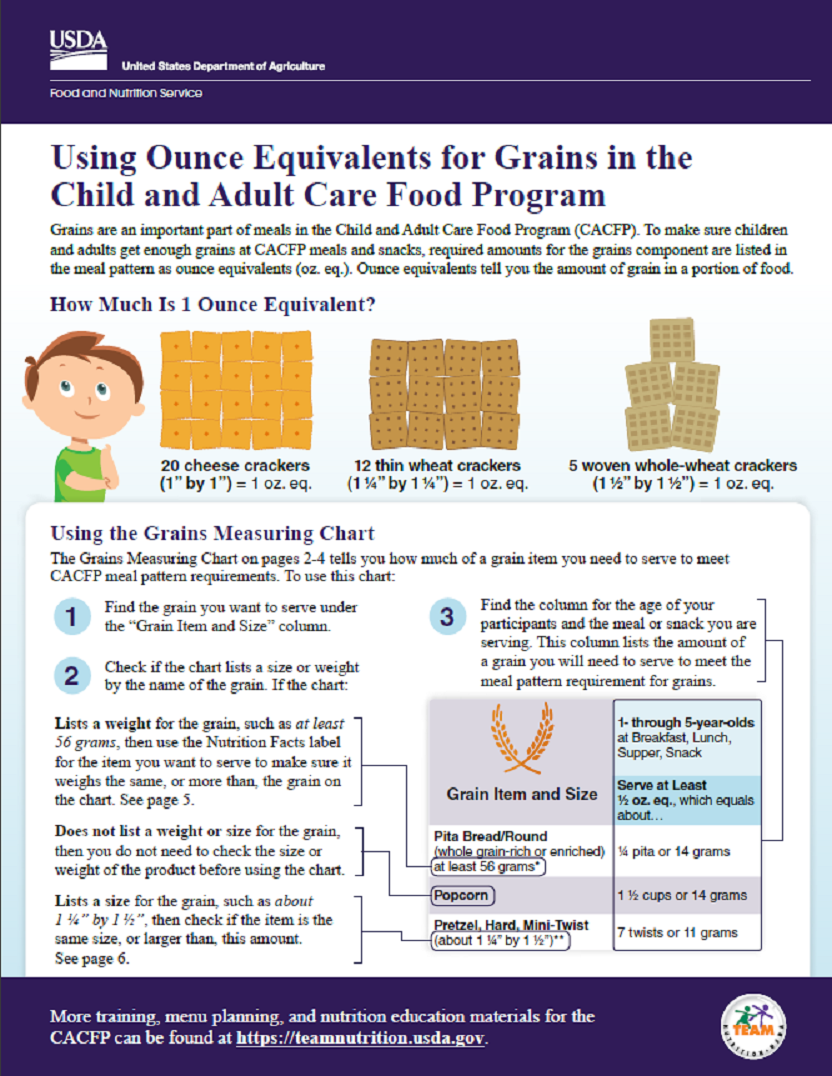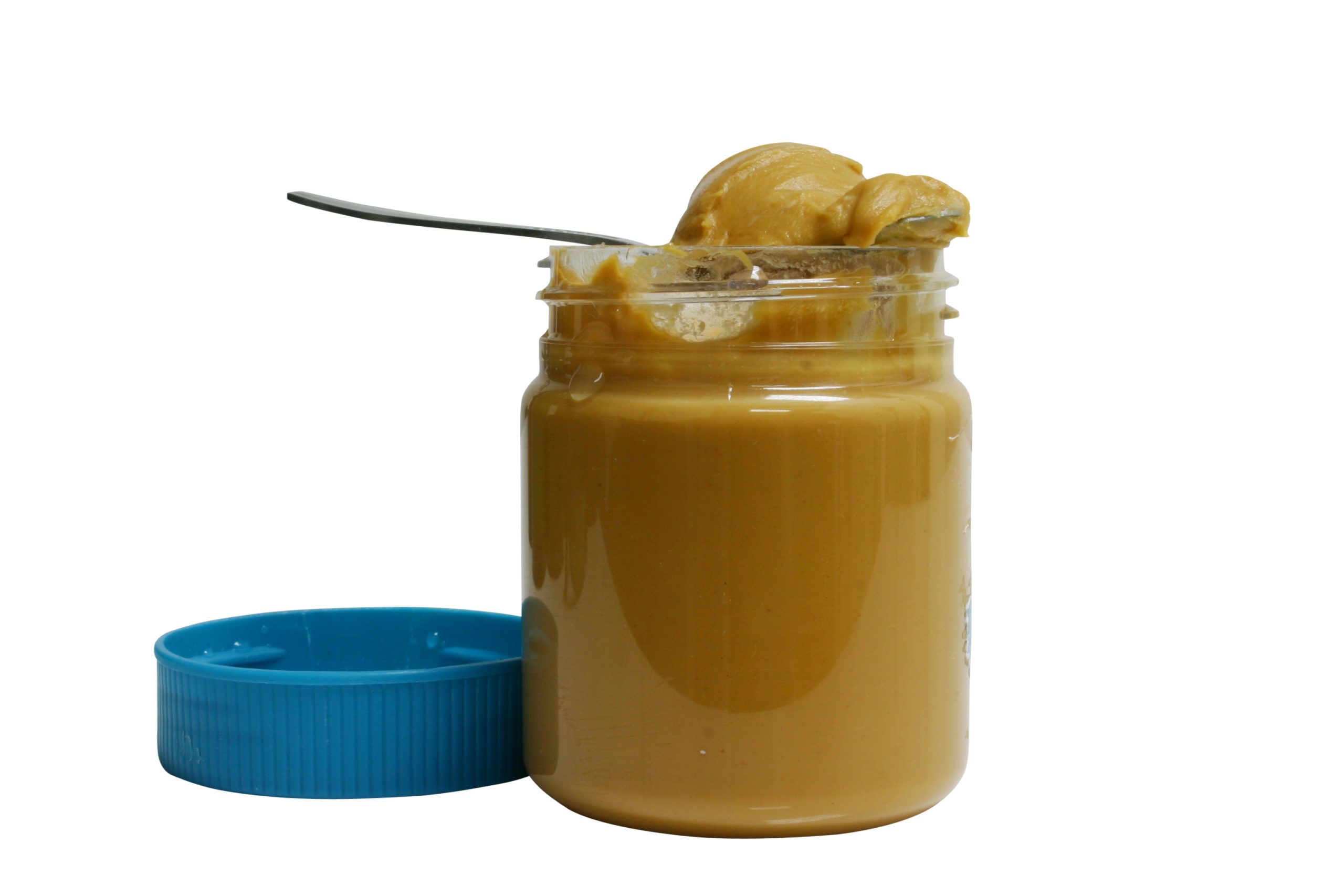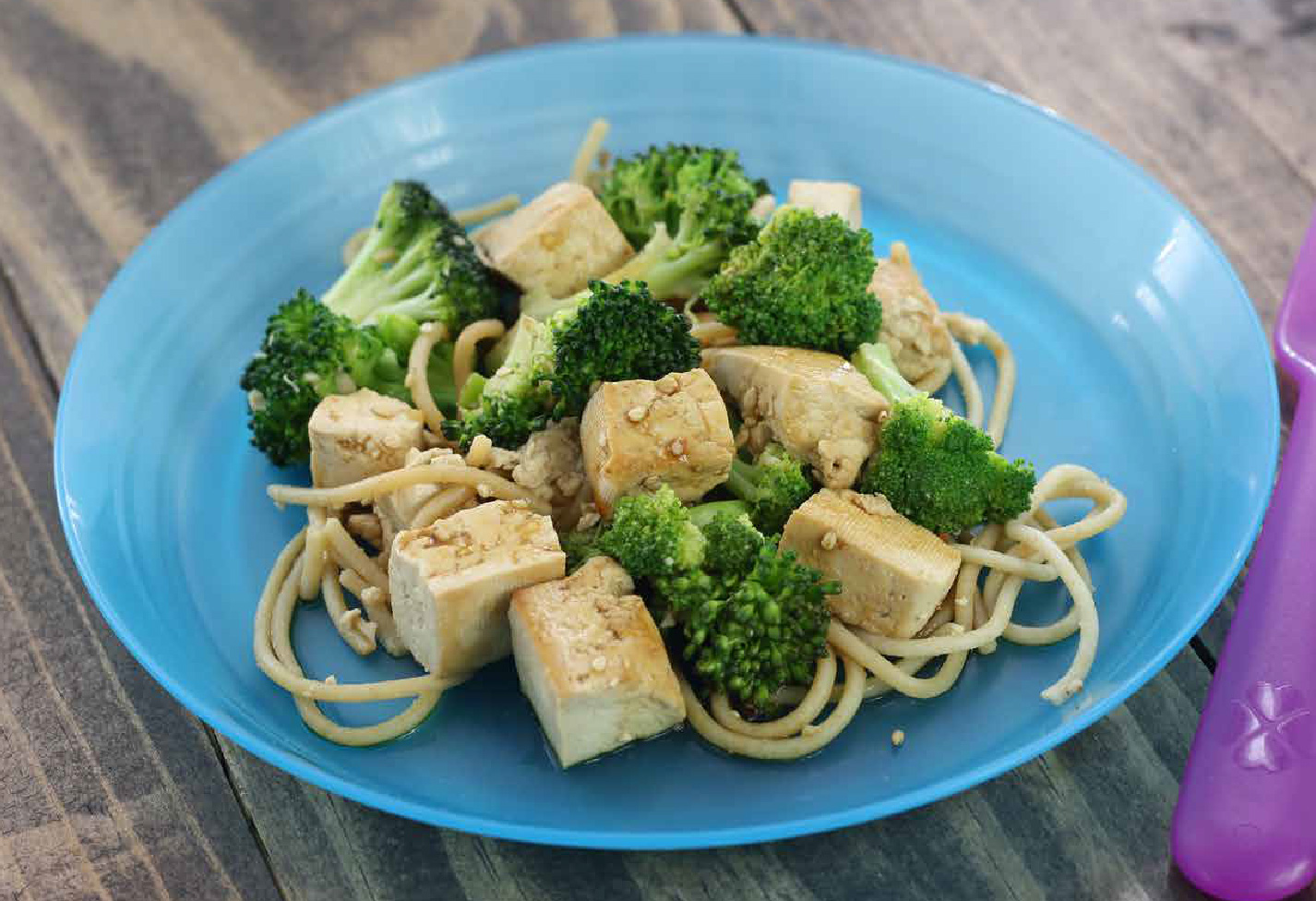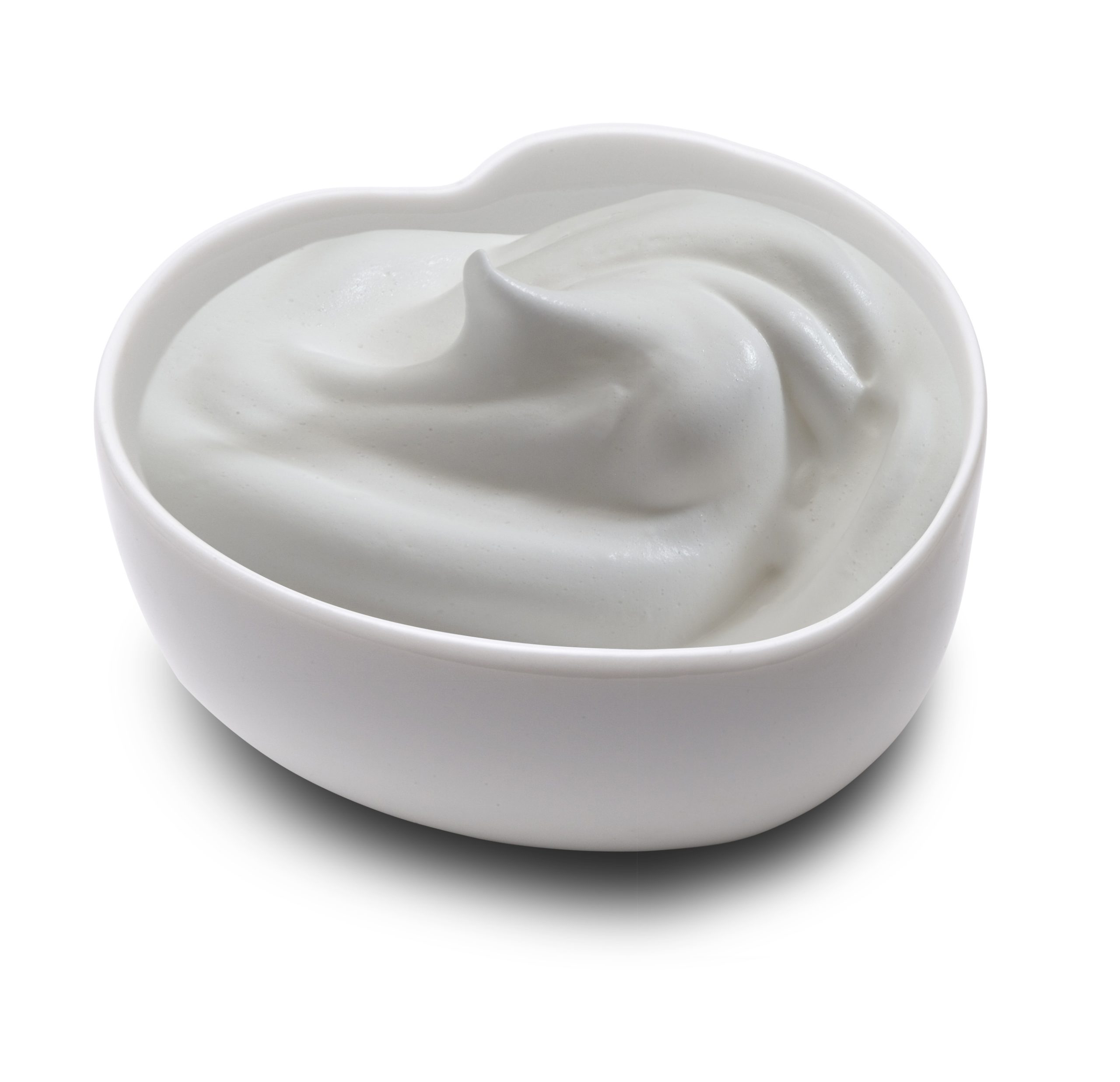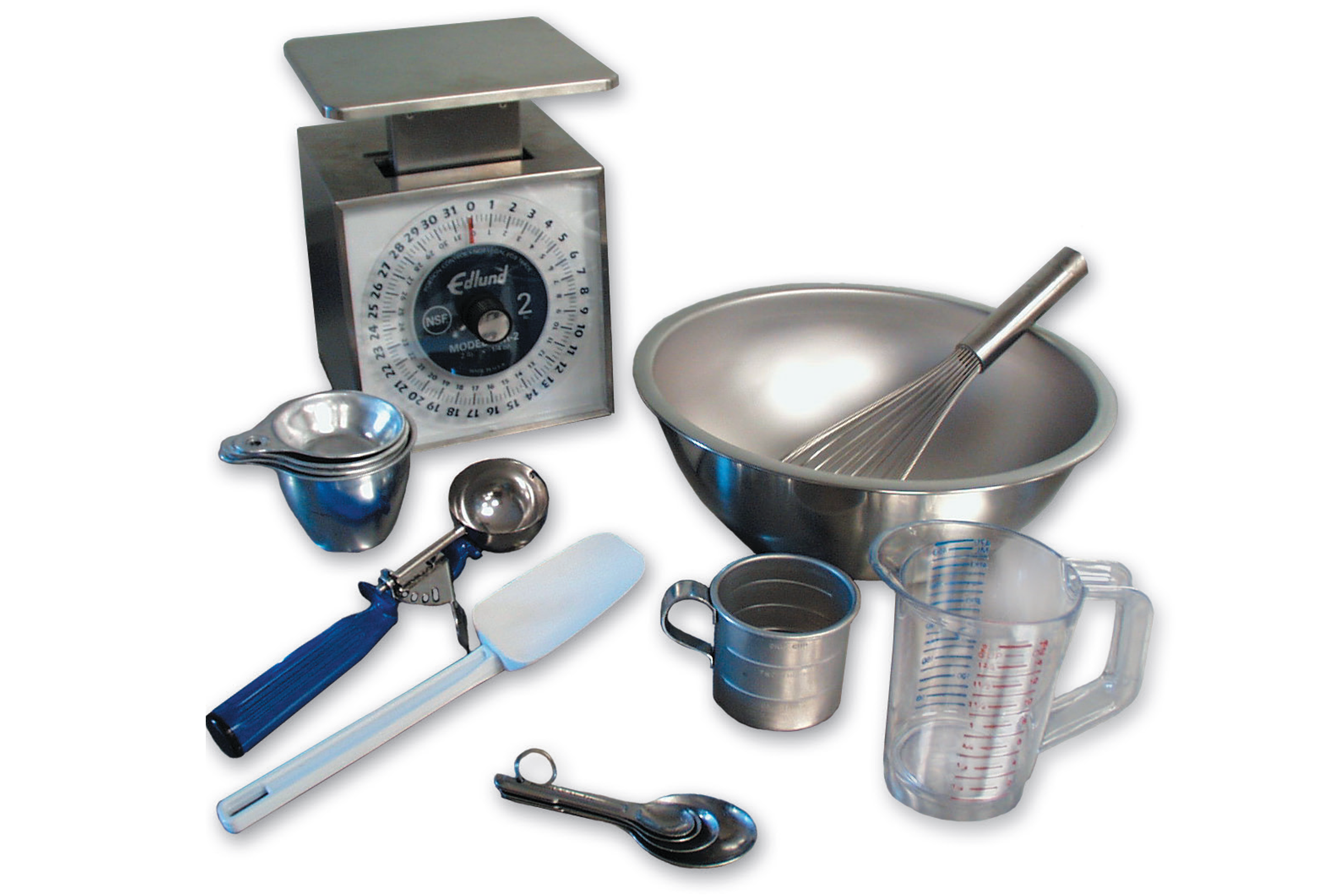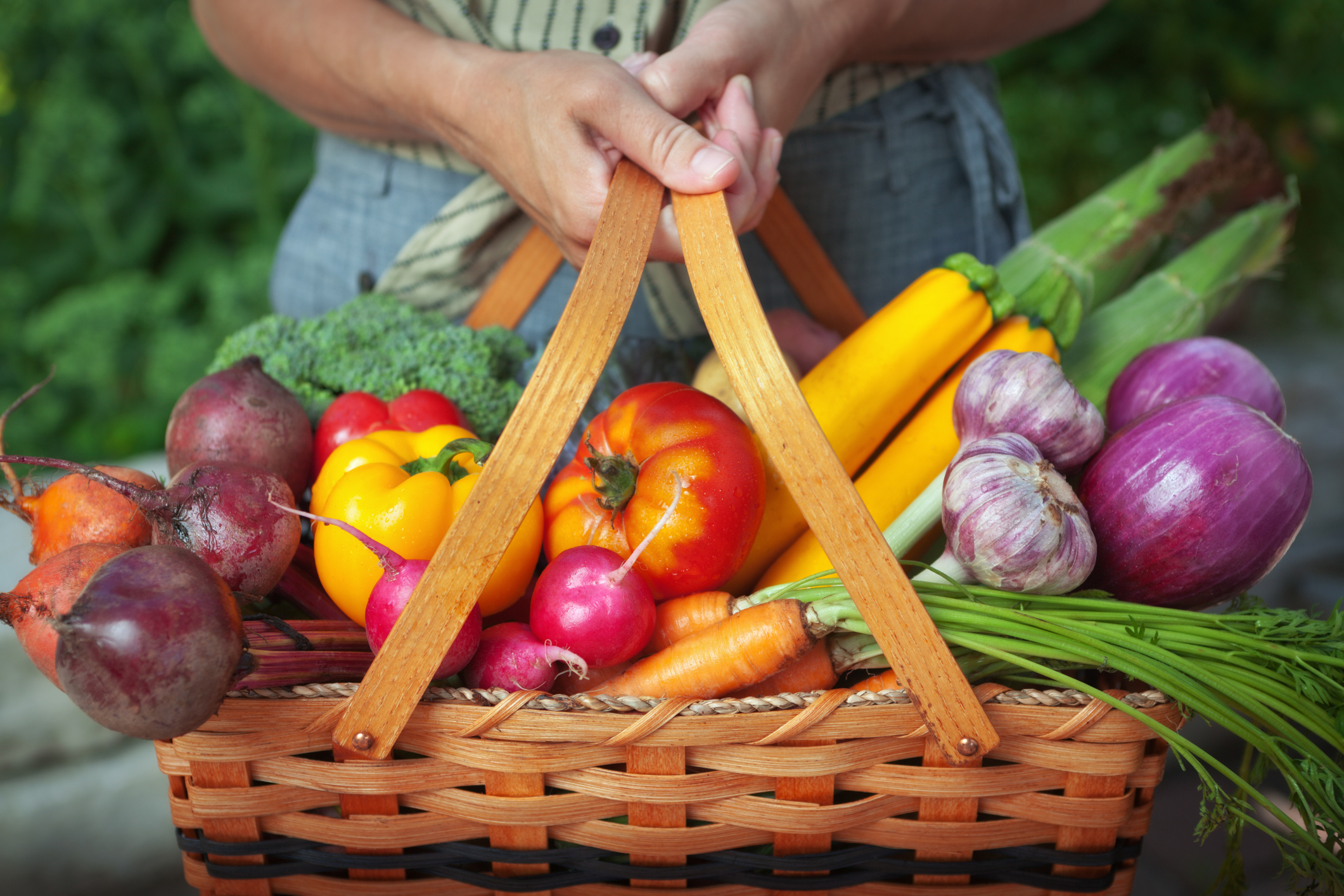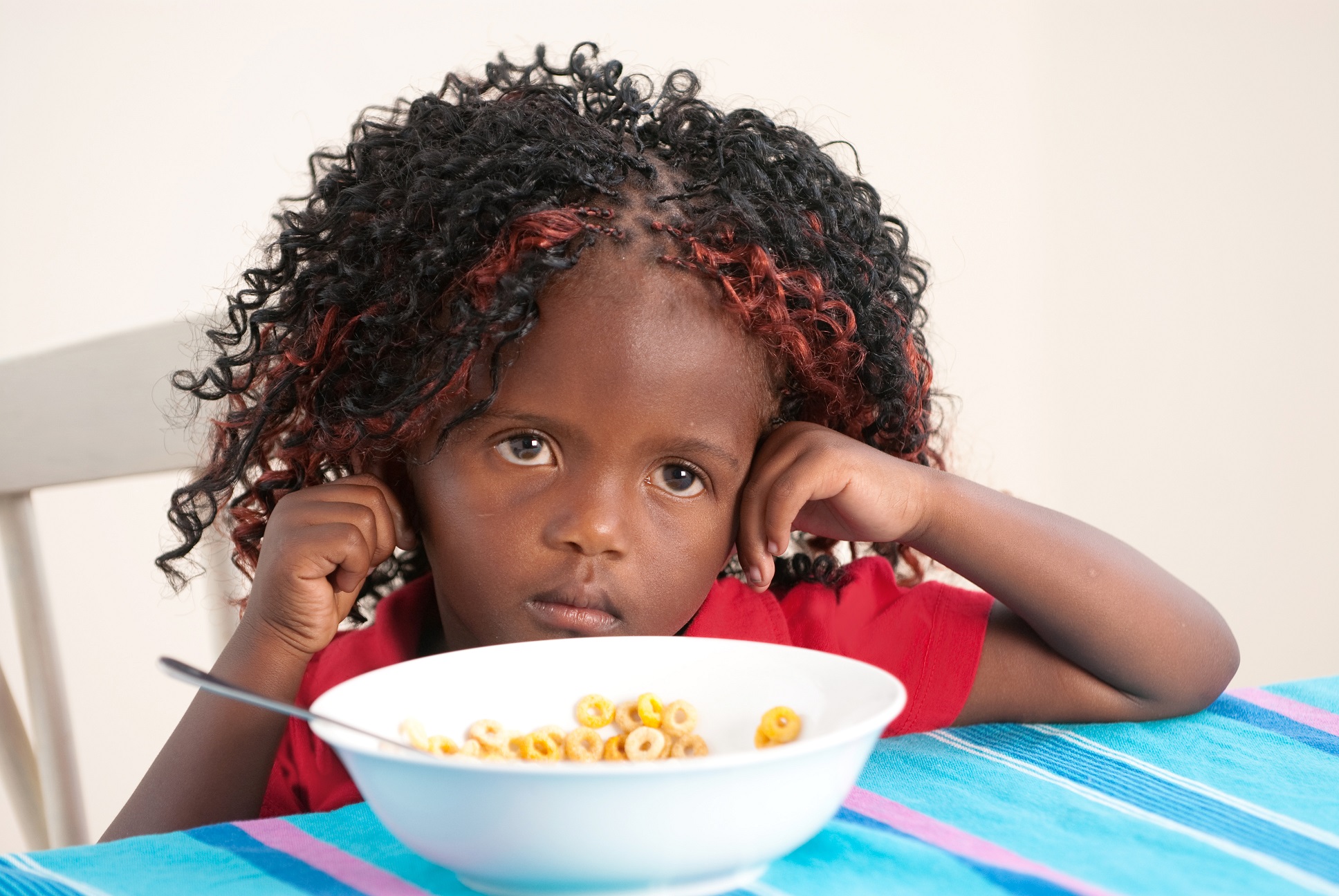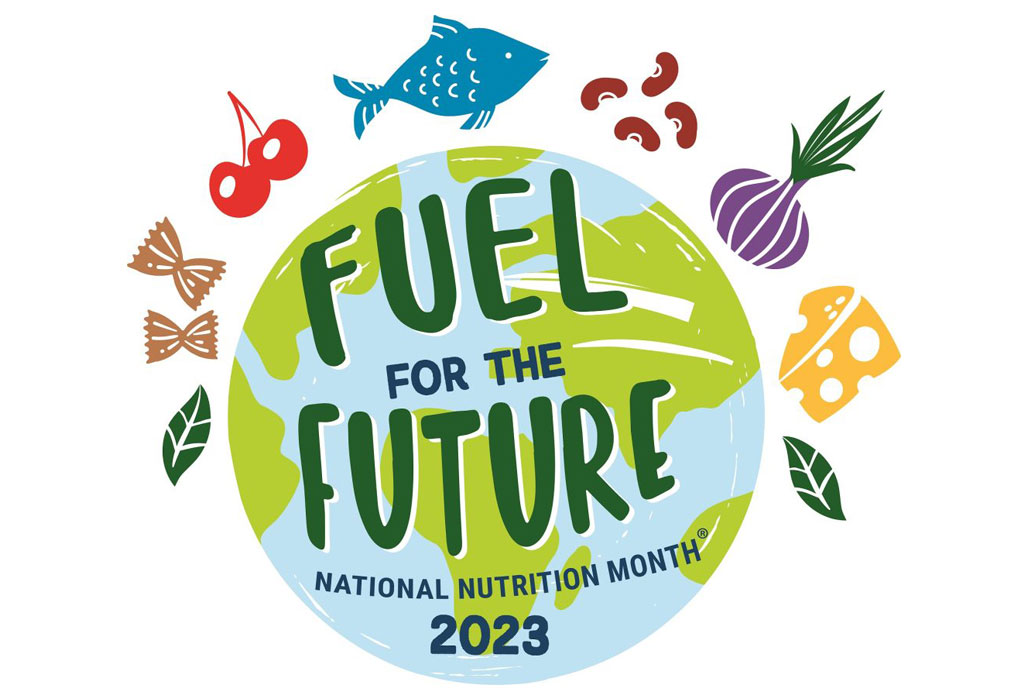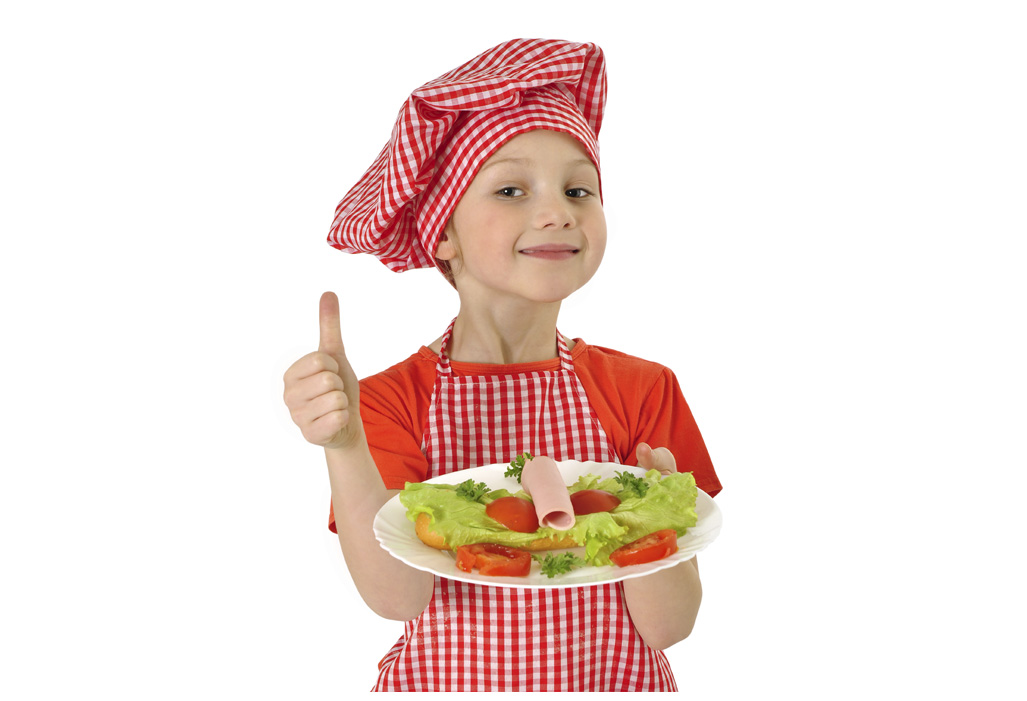
The Nutrition Facts label on food packages provides helpful information. For example, it features key information for crediting tofu and determining if a yogurt or cereal meets the sugar limit requirements in the Child and Adult Care Food Program (CACFP). It is a great tool to use when planning menus to determine creditable foods.
A Nutrition Facts label displays nutrient quantities based on the listed serving size of the food. The serving size may be different from the serving sizes specified in the CACFP meal pattern. This Mealtime Memo focuses on how to use the Nutrition Facts label to credit certain foods in the CACFP.
The U.S. Food and Drug Administration (FDA) updated the Nutrition Facts label on food products. Labels are easier to read and provide nutrition information consumers want and need. Learn more about food labels at these FDA websites:
Nutrition Facts Information Needed in the CACFP
Programs participating in the CACFP use the information on the Nutrition Facts label for two different purposes:
- To identify creditable foods
- To determine the ounce equivalents for grains
Determine Creditable Food Items
CACFP program operators use the Nutrition Facts label to determine if tofu, yogurt, and breakfast cereals are creditable. Here is a closer look at how to use the Nutrition Facts label information for each of these foods.
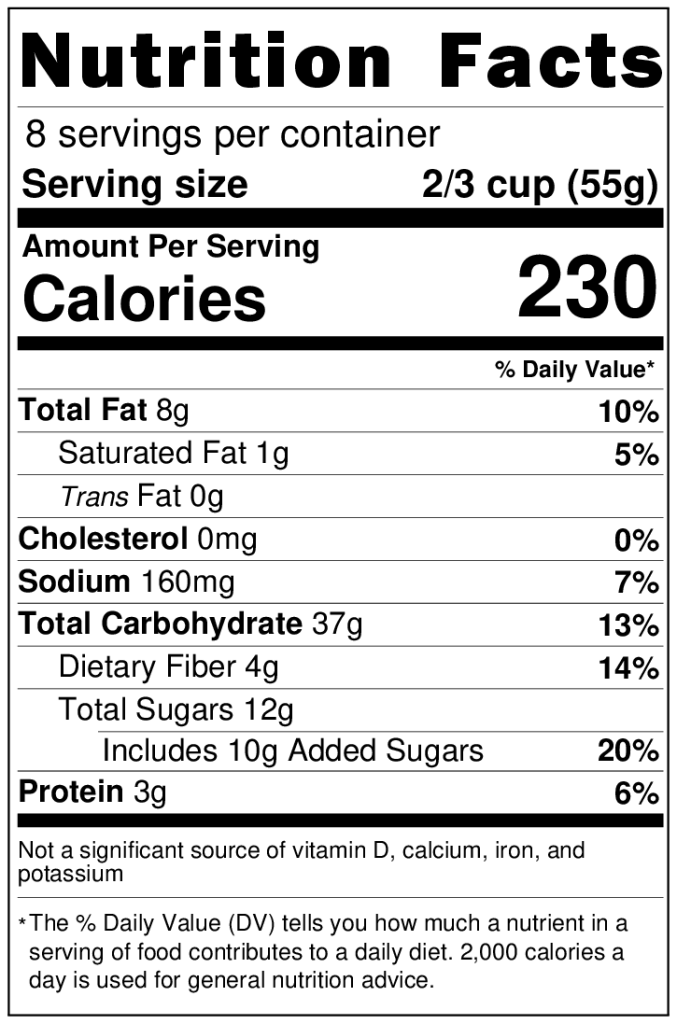
Tofu
Extra Firm Tofu
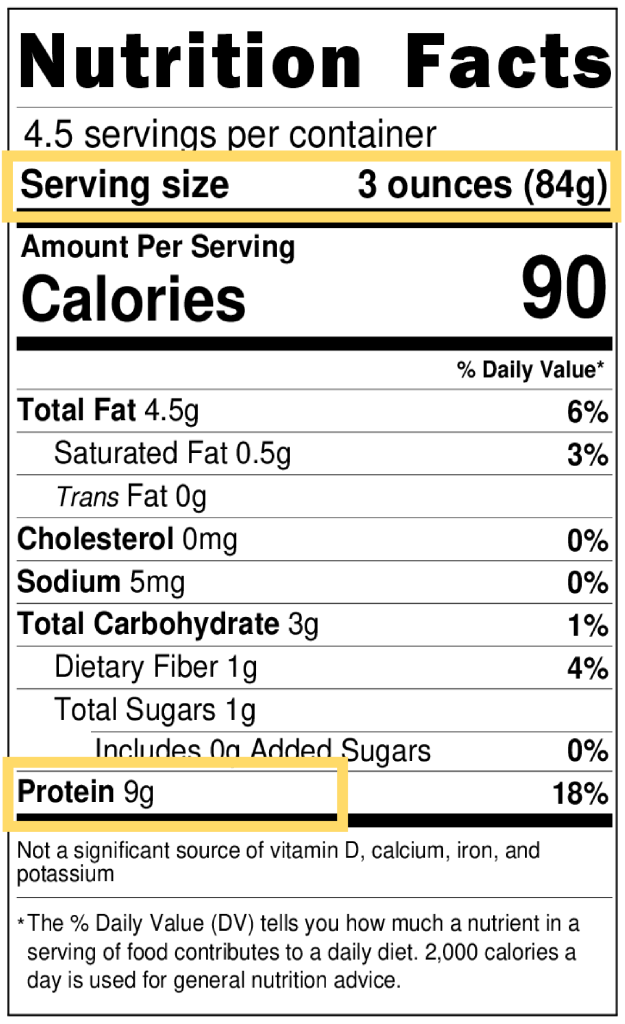
In the CACFP, 2.2 ounces (1/4 cup) of commercially prepared tofu, containing at least 5 grams of protein, is creditable as 1.0 ounce equivalent meat alternate.
- 1.0 ounce meat alternate = 2.2 ounces (1/4 cup) with at least 5 grams of protein
Use the Nutrition Facts label to determine if tofu is creditable. Looking at the Extra Firm Tofu Nutrition Facts label:
- Serving size = 3 ounces (84 grams)
- 3 ounce portion provides 9 grams of protein
Since this example is for a 3 ounce serving, you must determine the number of grams of protein per ounce so you can calculate how many grams of protein are in a 2.2 ounce serving. Divide the grams of protein (9) by the Serving size (3 ounces) to get grams per ounce.
- 9 grams protein ÷ 3 ounces = 3 grams protein per ounce
Next, calculate how many grams of protein are in a 2.2 ounce serving:
- 2.2 ounce serving X 3 grams protein per ounce = 6.6 grams protein in a 2.2 oz serving
This tofu product is creditable in the CACFP because a 2.2 ounce portion provides 6.6 grams of protein, which is more than the required 5 grams.
Yummy Yogurt
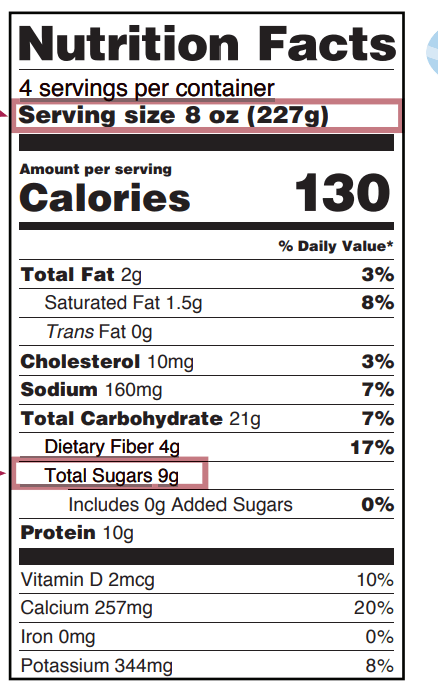
Yogurt
In the CACFP, yogurt must not have more than 23 grams of sugar per 6 ounces. Total sugars include both natural and added sugar. To determine if yogurt is creditable, use the Nutrition Facts label on the yogurt and the Sugar Limits in Yogurt chart found in the USDA worksheet Choose Yogurts That Are Lower in Sugar (pictured below).
In the Yummy Yogurt example, use the following information from the Nutrition Facts label:
- Serving size = 8 ounces (227 grams)*
- Total Sugars = 9 grams
Compare the Serving size and Total Sugars amount from the Nutrition Facts label to the Sugar Limits in Yogurt chart. If the yogurt has that amount of sugar or less, the yogurt meets the sugar limit and is creditable.
The Yummy Yogurt is creditable because the 8 ounce (227 grams) serving has 9 grams of Total Sugar, which is less than 31 grams from the Sugar Limits in Yogurt chart.
*The weight of a serving may be listed in either ounces or grams. Some packages will list both. The Sugar Limits in Yogurt chart gives the sugar limits for common serving sizes in ounces (oz) and grams (g).
Sugar Limits in Yogurt
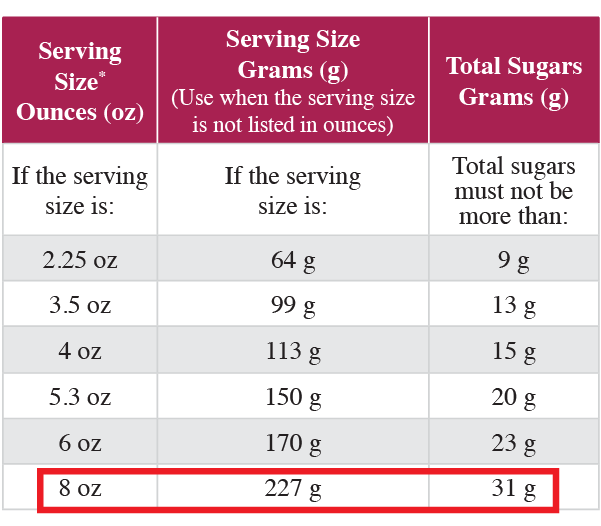
Toasty Oats Cereal
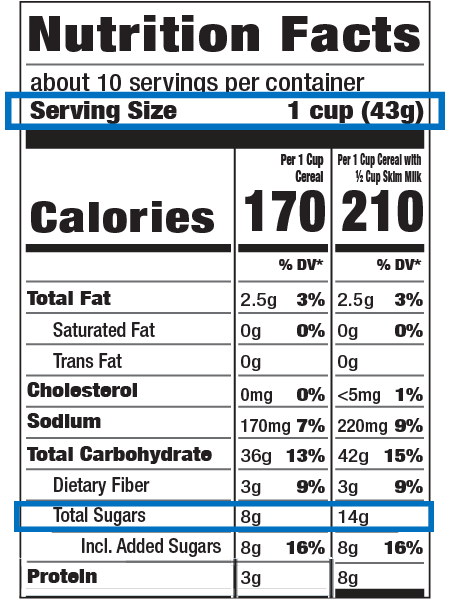
Breakfast Cereal
In the CACFP, all breakfast cereals, including ready-to-eat, instant, and regular hot cereal, must contain no more than 6 grams of sugar per dry ounce. Total sugars include both natural and added sugar. To determine if cereal is creditable, use the Nutrition Facts label for the cereal and the Sugar Limits in Cereal chart found in the USDA worksheet Choose Breakfast Cereals That Are Lower in Sugar (pictured below).
In the Toasty Oats Cereal example, use the following information from the Nutrition Facts label:
- Serving Size = 1 cup (43 grams)*
- Total Sugars = 8 grams
Find the Serving size in grams and the Total Sugars amount from the Nutrition Facts label. Use the Total Sugar amount from the column without milk and compare it to the Sugar Limits in Cereal chart. If the cereal has that amount of sugar or less, the cereal meets the sugar limit and is creditable.
The Toasty Oats Cereal meets the sugar limit. The 43 gram serving size has 8 grams of Total Sugars, which is less than the 9 grams, as indicated on the chart.
*Some Nutrition Facts labels may show more than one serving size column. For cereals, the second column shows amounts if milk is served. The serving sizes on the label may vary from the serving sizes for the CACFP Meal Pattern.
Sugar Limits in Cereal
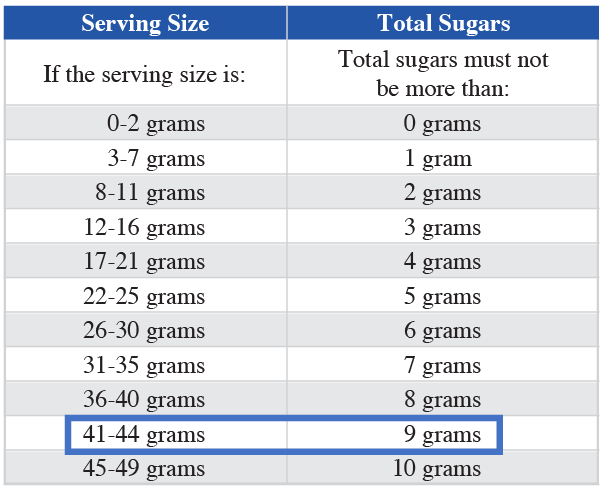
Flour Tortilla
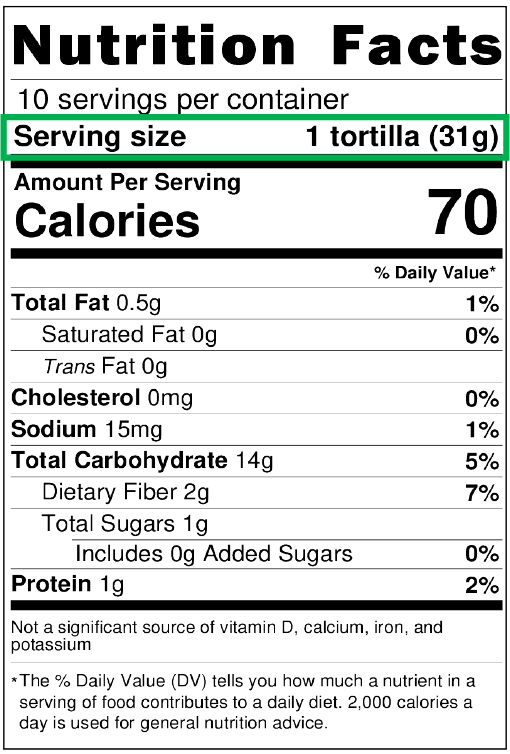
Flour Tortilla
Locate the Serving size and weight of a product on the Nutrition Facts label. In the Flour Tortilla example:
- Serving size = 1 tortilla (31 grams)
The image on the right shows the FBG Mobile App screen when the product’s serving size (31 grams) is entered. Once entered, the mobile app tells you:
- 1 tortilla provides 1 oz eq grains
Here are some resources that provide more information on the Exhibit A Grains Tool:
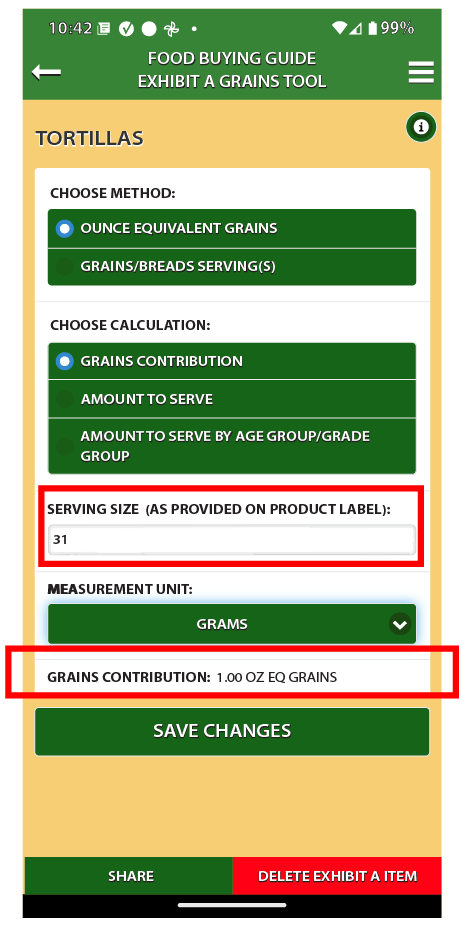
Menu Ideas
The following menu ideas provide a variety of foods, colors, and textures. Some recipes contain multiple food components listed in parentheses after the recipe.
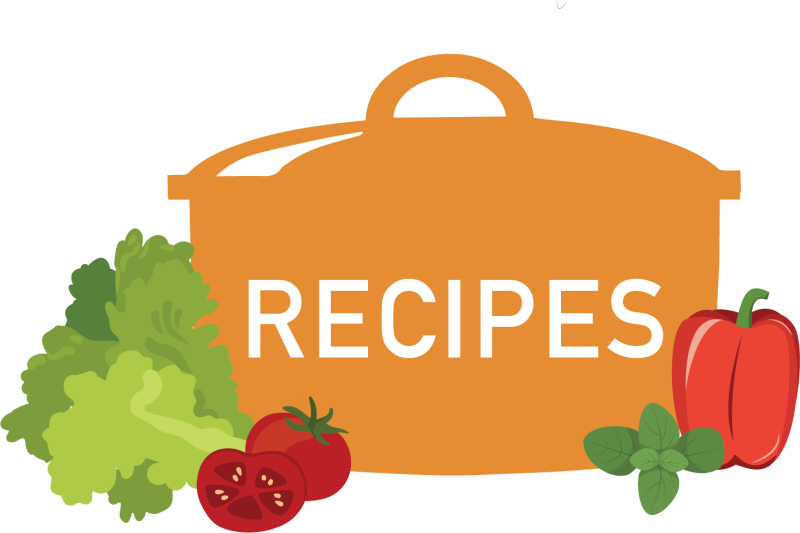
Recipes
You can find the featured recipes from the Menu Ideas section in the resources below:
- The Child Nutrition Recipe Box has USDA standardized recipes for child care centers and family child care homes.
- The Child Nutrition Recipe Box: New CACFP Lunch/Supper Recipes has standardized recipes per age group (3–5 and 6–18 year-olds) and for servings of 6, 25, and 50.
References
Institute of Child Nutrition. (n.d.). Child nutrition recipe box. https://theicn.org/cnrb/
Institute of Child Nutrition. (n.d.). New CACFP lunch/supper recipes. Child Nutrition Recipe Box. https://theicn.org/cnrb/2022-cacfp-recipes/
Institute of Child Nutrition. (n.d.). Sauteed tofu and broccoli – USDA recipe for child care centers. Child Nutrition Recipe Box. https://theicn.org/cnrb/recipes-for-centers-main-dishes/sauteed-tofu-and-broccoli
Institute of Child Nutrition. (2022, July 8). CACFP child meal pattern poster. https://theicn.org/resources/1482/cacfp-meal-pattern-posters-and-infographics/116958/cacfp-child-meal-pattern-poster-2.pdf
Institute of Child Nutrition. (2022). Child and adult meal pattern requirements: A CACFP
meal pattern requirements supplemental training. University, MS: Author.
https://theicn.org/icn-resources-a-z/CACFP-meal-pattern-training/
U.S. Food and Drug Administration. (2022, February 25). How to understand and use the nutrition facts label. https://www.fda.gov/food/new-nutrition-facts-label/how-understand-and-use-nutrition-facts-label
U.S. Food and Drug Administration. (2022, April 13). The new nutrition facts label: What’s in it for you? https://www.fda.gov/food/nutrition-education-resources-materials/new-nutrition-facts-label
U.S. Department of Agriculture. (n.d.). Food buying guide for child nutrition programs. https://foodbuyingguide.fns.usda.gov/MasGuestUsers/GuestUserLogin?ReturnUrl=%2FExhibitATool%2FIndex
U.S. Department of Agriculture, Food and Nutrition Service. (n.d.). Nutrition standards for CACFP meals and snacks. https://www.fns.usda.gov/cacfp/meals-and-snacks
U.S. Department of Agriculture, Food and Nutrition Service. (2018, March 31). Food buying guide mobile app. https://www.fns.usda.gov/tn/food-buying-guide-mobile-app
U.S. Department of Agriculture, Food and Nutrition Service. (2019, September 25). Exhibit A grains tool to the rescue! https://www.fns.usda.gov/tn/exhibit-grains-tool-rescue
U.S. Department of Agriculture, Food and Nutrition Service. (2020, March 4). Choose breakfast cereals that are lower in sugar. https://www.fns.usda.gov/tn/choose-breakfast-cereals-are-lower-sugar
U.S. Department of Agriculture, Food and Nutrition Service. (2020, March 6). Choose yogurts that are lower in sugar. https://www.fns.usda.gov/tn/choose-yogurts-are-lower-sugar
U.S. Department of Agriculture, Food and Nutrition Service. (2020, March 11). Calculating sugar limits for breakfast cereals in the child and adult care food program. https://www.fns.usda.gov/tn/calculating-sugar-limits-breakfast-cereals-cacfp
U.S. Department of Agriculture, Food and Nutrition Service. (2020, March 11). Calculating sugar limits for yogurt in the child and adult care food program. https://www.fns.usda.gov/tn/calculating-sugar-limits-yogurt-cacfp
U.S. Department of Agriculture, Food and Nutrition Service. (2020, July 20). How to maximize the exhibit A grains tool. https://www.fns.usda.gov/tn/how-maximize-exhibit-grains-tool
U.S. Department of Agriculture, Food and Nutrition Service. (2021, October 19). Using ounce equivalents for grains in the CACFP. https://www.fns.usda.gov/tn/using-ounce-equivalents-grains-cacfp
U.S. Department of Agriculture, Food and Nutrition Service. (2022, March). Using the nutrition facts label in the CACFP. https://www.fns.usda.gov/tn/using-nutrition-facts-label-cacfp


